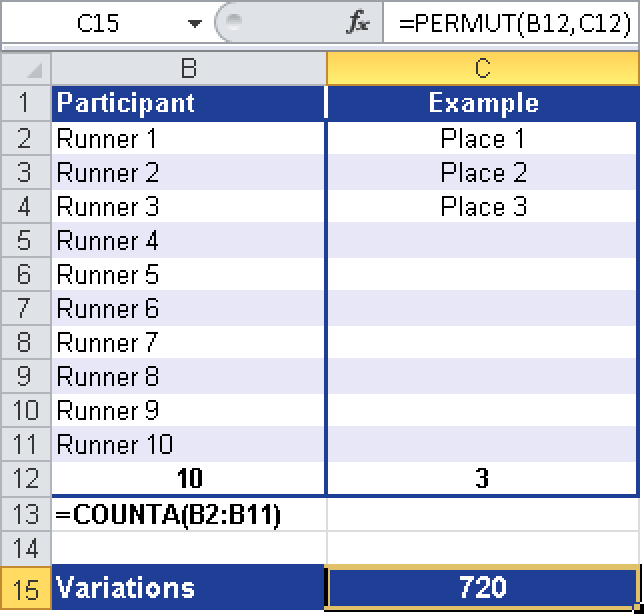Syntax. PERMUT(number;number_chosen)
Definition. This function returns the number of permutations to query k elements from n elements. A permutation is a set of elements or events where the internal order is significant.
Arguments
number (required). The number of elements
number_chosen (required). Specifies the number of elements for a permutation
Note
Both arguments are truncated to integers.
If number or number_chosen isn’t a numeric value, the PERMUT() function returns the #VALUE! error. If number is less than or equal to 0, the PERMUT() function returns the #NUM! error. If number is less than number_chosen, the PERMUT() function returns the #NUM! error.
Background. The PERMUT() function belongs to combinatorics that determine the number of possible orders for objects. The PERMUT() function is different from the COMBIN() function, for which the internal order is not significant. This means that for PERMUT(), the order of the elements cannot be subsequently changed—for COMBIN(), this is immaterial. For example, the PERMUT() function calculates the probabilities for the first three places in a race with ten participants, whereas with the COMBIN() function you can calculate lottery-style probabilities. The difference: Although the order of the lottery numbers can be changed, the runners would protest if you sorted the first to third places by the first letter of the last names.
The PERMUT() function calculates the number of ordered samples of k elements from n elements. The equation to calculate the number of permutations is:
Example. Let’s use the example of the race. Ten runners participate in the race. The first three runners get a prize, and the other runners get nothing. You want to know the number of possible variations for the first three places. Therefore, you use the PERMUT() function.
What values are specified for the n and k arguments?
n = 10 (the number of elements equals the number of runners)
k = 3 (the permutation consists of three elements—the first three places)
Figure 12-113 shows the result.
The PERMUT() function returns 720 different possibilities for the winners of the three places.


